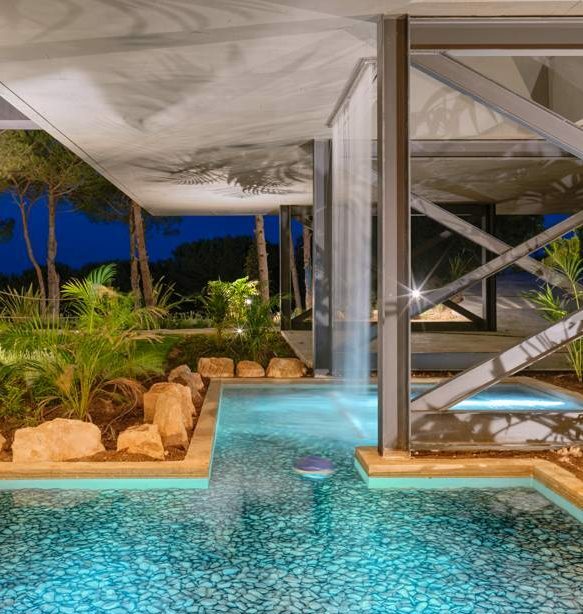Casares: A Treasure on the Costa del Sol That Will Captivate You
Located in the province of Malaga, there is a small paradise that has been awarded the distinction of being one of the most beautiful villages in Spain. We are talking about Casares, a charming white village located on the Costa del Sol.
If you are looking for a quiet place to disconnect from routine and enjoy the scenery, Casares is the right place for you. In addition to its spectacular sea views, the village holds a great wealth of heritage and culture, with traces dating back to the Roman and Arab eras. Get ready to discover the essence of a charming village that will captivate you with its magic and authenticity.
In this article, we invite you to learn in detail everything that Casares has to offer. Come and fall in love with its cobbled streets, white houses, and historical monuments!
History and Culture in Casares
Casares is a charming Andalusian white village located in the province of Malaga, offering its visitors a wide range of tourist attractions, from a rich history to a variety of monuments and points of interest. The tourist attractions in Casares are numerous, and exploring them is a wonderful vacation plan.
The Fortress-Castle of Casares: A Glimpse into the Past
One of the most important monuments in Casares is the castle that stands on top of the hill. The fortress was built in the 13th century by the Arabs to control the passage between the sea and the Serrania de Ronda, later becoming an important stronghold in Christian times. From the castle, you can enjoy breathtaking views of the Serrania de Ronda, the Genal Valley, the Costa del Sol, and the Strait of Gibraltar. Today, it also serves as a cultural center and a museum that brings tourists closer to the local history and culture.
Church of San Sebastian: An Architectural Jewel in the Heart of the Village
Another notable monument in Casares is the Church of San Sebastian, a Baroque religious building built in the 18th century. In addition to its religious value, the church is appreciated for its architectural beauty and the numerous altarpieces, frescoes, paintings, and carvings it contains inside. The church is located in the center of the village, and it is impossible not to admire it.
Casares is also a village full of charming fountains, caves, the aqueduct of Fuente Vieja, and shelters carved into the rock by the early inhabitants of the area. The Ballesteros caves are located at the foot of the castle and are another tourist attraction in this corner of the Costa del Sol. The surrounding landscape is spectacular, with valleys, mountains, rivers, and waterfalls, making Casares an ideal destination for nature lovers.
With a history that dates back to immemorial times, Casares possesses a rich cultural and artistic heritage manifested in the numerous monuments and historical buildings scattered throughout the municipality. Moreover, its privileged location, just a few kilometers from the coast and at the foot of the impressive Serrania de Ronda, makes it an exclusive and unique tourist destination.
Casares is a beautiful Andalusian village that offers its visitors a perfect combination of history, culture, nature, and architectural beauty, making it one of the most attractive places on the Costa del Sol.
Nature and Dreamlike Landscapes
Casares, the epitome of an Andalusian white village, is known for its wonderful nature and dreamlike landscapes. Located in the province of Malaga, in the autonomous community of Andalusia, southern Spain, Casares is a popular tourist destination that attracts thousands of visitors throughout the year. Surrounded by a spectacular setting of hills and valleys, this coastal municipality offers a wide variety of activities for nature and outdoor enthusiasts.
One of the most stunning places to enjoy nature in Casares is the Sierra de Grazalema Natural Park, located north of the municipality. A walk through this park will take you through impressive landscapes of mountains, rivers, and Mediterranean forests, where you can observe a great diversity of flora and fauna. From Pico del Relojero, you can enjoy spectacular panoramic views of the Mediterranean coast and the nearby mountains.
Along its coast, Casares boasts dreamlike beaches that are a true treasure to discover on the Costa del Sol. Casares beaches, such as La Chullera or Ancha, are ideal for sun and sea lovers. With numerous beach bars and restaurants where you can savor local cuisine, these beaches are perfect for a relaxing day under the sun.
Exploring Sierra de Grazalema Natural Park
Located in the Sierra de Cadiz, Sierra de Grazalema Natural Park is one of the most impressive places in the province of Malaga. Surrounded by magnificent landscapes of mountains, rivers, and Mediterranean forests, this park is ideal for hiking, enjoying the outdoors, and observing native flora and fauna. Additionally, from Pico del Relojero, you can enjoy spectacular panoramic views of the Mediterranean coast and the nearby mountains. Exploring this park is a unique experience that will transport you to unexplored and wild nature.
Discovering the Beaches of Casares: A Hidden Treasure on the Costa del Sol
Casares is known for its dreamlike beaches located on the Costa del Sol. La Chullera or Ancha are some of the most popular beaches, with crystal-clear waters and fine golden sand. Moreover, these beaches offer a wide variety of water activities such as diving, windsurfing, or boat rides. The local beach bars and restaurants are also a great attraction, where you can taste typical dishes of Andalusian cuisine. Whether to enjoy the sun and the beach or to practice water sports, the beaches of Casares are a true treasure to discover on the Costa del Sol.
Casares Gastronomy
Casares gastronomy is a reflection of its history and tradition, a fusion of Roman, Moorish, and Andalusian influences. Casares restaurants offer typical dishes of Andalusian cuisine, with a great variety of flavors and aromas that will make you enjoy a true gastronomic experience. Among its most outstanding dishes, you can find Andalusian gazpacho, Malaga-style ajoblanco, grilled sardines, or roasted suckling pig, among others. Don’t miss the opportunity to enjoy the local gastronomy in any of the restaurants in Casares, where they will surprise you with their delicious selection of typical dishes.
Casares Gastronomy
In the town of Casares, located in the province of Malaga, in the autonomous community of Andalusia, southern Spain, you can enjoy a unique gastronomy that combines traditional Mediterranean flavors with fresh local ingredients. Typical dishes of Andalusian cuisine can be found in local restaurants, and increasingly on the tables of visitors who come to discover the most authentic flavors and aromas of this region.
Casareña gastronomy, like that of all Andalusia, is characterized by the use of extra virgin olive oil, which is considered the foundation of the Mediterranean diet. Some of the most outstanding specialties include tomato soup, a smooth and delicious cream made from fresh tomatoes, bread, and extra virgin olive oil; gazpacho, a cold soup made from tomatoes, peppers, and cucumbers; and ajoblanco, a cold soup made from almonds and garlic.
Among the main dishes of Casares cuisine, fresh fish is one of the main ingredients. Fried fish is one of the most popular dishes on the Costa del Sol, and especially in Casares. Grilled sardines, cooked on cane skewers, are also very typical.
As for meat, roasted suckling goat is one of the most requested dishes. In addition, the region is known for its production of sausages and cured meats, such as chorizo and salchichón, which are widely used in local cuisine in dishes such as cocido andaluz (Andalusian stew).
To accompany meals, a common option is the wine from the region, with the wines from the Málaga region being of excellent quality.
In conclusion, Casareña gastronomy is a unique culinary experience that combines fresh and flavorful local ingredients with the most traditional recipes of Andalusian cuisine. Visiting local restaurants is the best way to discover the typical dishes of the area while enjoying the beautiful town of Casares, which is itself an architectural and cultural gem of the Costa del Sol.
Restaurants in Casares
Casares offers a varied gastronomic offer for all tastes and occasions, from sophisticated restaurants to tapas bars and more affordable local eateries. Due to its location on the Costa del Sol, many restaurants specialize in fresh fish and seafood, although you can also find local meat dishes such as roasted suckling goat.
One of the standout restaurants in the area is La Terraza, located at Hotel El Secadero. This establishment offers a spectacular view of the landscapes of the Serranía de Ronda and the Costa del Sol while enjoying local and Spanish dishes, a varied selection of wines, and high-quality cuisine. Among their specialties are seafood grill, tomato soup, and oxtail.
Another highly recommended restaurant in Casares is Mesón el Molino. Located in a tastefully renovated old house, it offers traditional Andalusian cuisine with typical dishes such as fried fish, porras, and ajoblanco. The cozy atmosphere and excellent service make it a must-visit for lovers of authentic and tasty food.
For those who enjoy more modern flavors, the restaurant Arroyo Hondo, located on the outskirts of Casares, offers author cuisine based on local and fresh ingredients. It is a sophisticated and elegant establishment that prides itself on its excellent selection of dishes, from fish and seafood to meat and vegetables, always with a modern and creative touch.
In conclusion, Casares is a destination that offers a diverse gastronomic offer for visitors, and local restaurants do not disappoint in terms of quality, variety, and authenticity of Andalusian cuisine. Those who visit the area should make a stop at some of these restaurants to enjoy their cuisine and unique charm.
Frequently Asked Questions about Casares
How many square kilometers does Casares cover?
The municipality of Casares is located in the province of Malaga, in Andalusia. It is known for its natural beauty and its old town, declared a Historic-Artistic Ensemble. But how many square kilometers does it cover?
Casares has a total area of 160.77 square kilometers. It is an extensive municipality, located in the Serrania de Ronda, on the western coastal area of the province of Malaga. It borders the municipalities of Estepona, Manilva, Gaucín, Jimena de la Frontera, Benahavís, and Casares.
The majority of Casares’ territory is included in the Sierra de las Nieves Natural Park and the Sierra de las Nieves Biosphere Reserve, making it an ideal place for hiking and observing native fauna and flora.
In addition to hiking trails, Casares offers other tourist attractions such as the Arab castle, the Church of the Encarnación, several prehistoric caves, and the archaeological site of the Roman villa of Loma del Castillo.
With its area of 160.77 square kilometers, Casares is a municipality full of charm and natural and historical richness to discover.
If you want to discover a place full of history, culture, nature, and dreamlike landscapes, you can’t miss Casares. This white village on the Costa del Sol hides a rich historical heritage that can be appreciated in its fortress-castle and the Church of San Sebastian. If you love nature, the Sierra de Grazalema Natural Park is a perfect place for hiking and enjoying the most incredible landscapes. Additionally, you shouldn’t miss the opportunity to enjoy the beaches of Casares, a true treasure to discover. Lastly, if you are a gastronomy lover, we invite you to try the typical Andalusian dishes that you can find in Casares’ restaurants. Keep exploring our blog for more information about Casares and the secrets it holds in every corner.
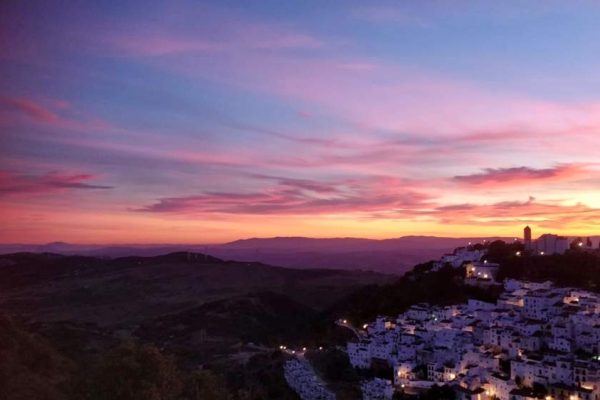
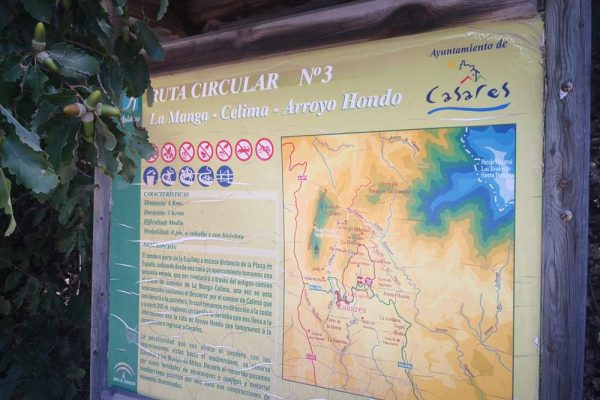
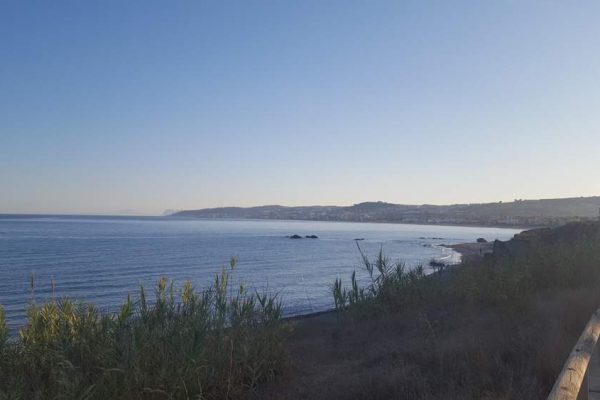
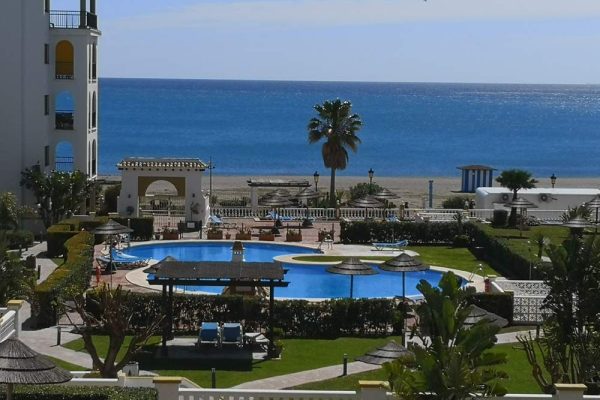
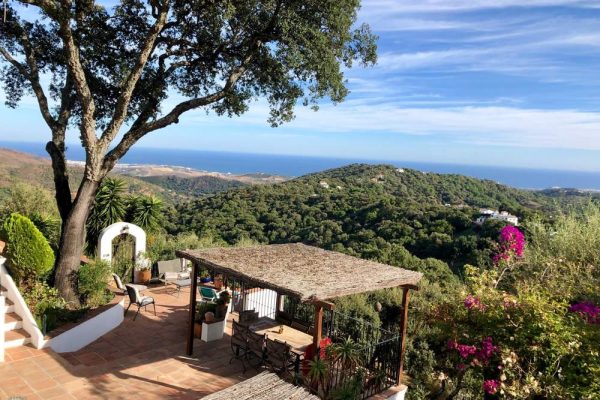
In addition, in the municipality of Casares we have 2 km of coastline and three golf courses of the highest level, for lovers of this sport.
– The Casares Costa Golf consists of 9 holes with a large expanse of Mediterranean vegetation.
– The Doña Julia Golf Club is an 18-hole golf course with splendid views of the Mediterranean Sea and the African coast. It offers courses adapted for both experienced and novice players.
– Finca Cortesin Hotel Golf & Spa is considered one of the best golf courses in Spain. The prestigious publication Golf Digest recognised it as one of the best golf courses in Spain.
PLACES WE RECOMMEND VISITING
– The Casa Natal Blas Infante, who is considered the father of the Andalusian homeland. Its halls house temporary exhibitions with works by local artists. In this building there is a tourist office.
– Casares Castle is situated in the highest part of the village. The view from the castle stretches from the Serranía de Ronda to the bay of Algeciras. Some towers are still preserved, two gates known as the Arrabal and Arcos de la Villa, where the Museum of Ethnohistory is located. Let us not forget that part of the wall also remains.
– The church of La Encarnación, whose origins date back to the end of the 16th century, is worth another visit for its Mudejar-influenced bell tower and its back courtyard, which belonged to the former convent.
– The hermitage of San Sebastián, built in the 17th century, houses the image of Nuestra Señora del Rosario del Campo, patron saint of Casares.
Outside the centre of Casares, we would like to point out
– The remains of the Roman city of Lacipo, in the area known as El Torreón, which is practically a watchtower on an important route of penetration from the coast to the interior in Roman times. This strategic location makes it an important enclave for the dominion, which controlled the entrance route from the valley to the internal area of the provinces of Cádiz and Málaga, and, as a consequence, controlled part of both provinces.
– Sierra Crestellina Natural Site, declared a Protected Natural Site in 1989. In this area nature lovers will have the opportunity to enjoy endangered species of flora and breeding colonies of griffon vultures and Bonelli’s eagles.
– Paraje Natural de los Reales de Sierra Bermeja, which Casares shares with Estepona and Genalguacil. Declared a protected natural area, it has a total of 1,236 hectares, in which the Spanish fir is the main protagonist.
– The sulphurous Roman Baths of La Hedionda are another of Casares’ attractions that have been preserved for use many centuries later. Numerous people flock to these baths every day to enjoy the sulphurous waters and apply mud when starting or finishing a route along some of the trails in the area.
– The Gran Senda de Málaga: Genalguacil – Casares and Casares – Estepona, if you want to walk in the open air and enjoy this fantastic landscape.
